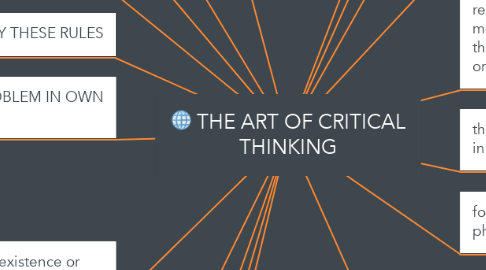
1. recognize unstated assumptions and values.
2. LOOK FOR A PATTERN
3. greek philosophers
3.1. Parmenides (560 BC – 510 BC) ...
3.2. Anaxagoras (500 BC–428 BC) ...
3.3. Empedocles (490 BC–430 BC) ...
3.4. Zeno (490 BC–430 BC) ...
3.5. Pythagoras (570 BC–495 BC) ...
3.6. Anaximander (610 BC–546 BC) ...
3.7. Socrates (469 BC–399 BC) ...
3.8. Plato (427 BC–347 BC)
3.9. More items...
3.10. Who are the 3 most important Greek philosophers?
3.11. Socrates, Plato, and Aristotle: The Big Three in Greek Philosophy. Much of Western philosophy finds its basis in the thoughts and teachings of Socrates, Plato, and Aristotle. You can't begin a study of world philosophy without talking about these guys: the Big Three ancient Greek philosophers.
3.12. Socrates, Plato, and Aristotle: The Big Three in Greek Philosophy ...
3.13. https://www.google.com/imgres?imgurl=https%3A%2F%2Fmedia.nationalgeographic.org%2Fassets%2Fphotos%2F957%2F798%2F480e8645-fc3f-48dc-b17a-e81038d3ee97.jpg&imgrefurl=https%3A%2F%2Fwww.nationalgeographic.org%2Fencyclopedia%2Fgreek-philosophers%2F&tbnid=5_UHpiIuTRuOZM&vet=12ahUKEwi73fLQlp3pAhUURs0KHcoDBAYQMygBegUIARDVAQ..i&docid=Zd396_JUOlFRMM&w=2000&h=1333&q=greek%20philosophers&ved=2ahUKEwi73fLQlp3pAhUURs0KHcoDBAYQMygBegUIARDVAQ
4. THE US NATIONAL COUNCIL FOR EXCELLENCE IN CRITICAL THINKING DEFINES CRITICAL THINKING AS : " INTELLECTUALLY DISCIPLINED PROCESS OF ACTIVELY, AND SKILLFULLY, CONCEPTUALIZING, ,APPLYING , SYNTHESIZING ,OR EVALUATING INFORMATION GATHERED FROM OR GENERATED , BY OBSERVATION EXPERIENCE , REFLECTION, REASONING , OR COMMUNICATION AS THE GUIDE TO BELIEF AND ACTION."
5. SUCCESS DOESN'T FALL INTO ONES LAP ..YOU HAVE TO GO GET IT.
6. engage in a level of thinking that will reap results
7. USE A MODEL
8. CAN YOU THINK OF PICTURE OR DIAGRAM TO HELP YOU UNDERSTAND THE PROBLEM?
8.1. got to make the content engaging and relevent for ages 13 + different app settings for growth
8.2. DO YOU NEED TO ASK A QUESTION TO GET THE ANSWER?
9. APPLY THESE RULES
10. CAN YOU REATATE PROBLEM IN OWN WORDS
10.1. IS THERE ENOUGH INFORMATION TO HELP YOU FIND A SOLUTION?
10.1.1. DO YOU UNDERSTAND ALLL THE WORDS USED IN STATING THE PROBLEM?
11. recognize the existence or nonexistence or crucial elements
11.1. draw warranted conclusions and generalizations
11.2. review extend much can be gained by taking the time to llok back and reflect to what you have done and what has worked and what hasnt.Think about other problems where this could be useful.
11.2.1. comprehend and use language with accuracy clarity and discerment.
11.2.1.1. put to test the conclusions and generalizations
11.2.1.1.1. to which one arrives
11.2.1.1.2. render accurate judgement s about specific things and qualities in everyday life.
11.2.2. interpret data to appraise evidence and evaluate arguments
12. recognize problems to find workable means to solving those problems.grasp the importance of prioritization.and order of procedure in problem solving.
12.1. gather pertinent data or information
13. critical analyses that is clear involve critique making clear reasoned judgements
14. carefully distinguishing beliefs that are reasonable and logical from thos that how appealing to our egos they may lack adequate evidence or rational foundation to warrant belief
15. the app can have a free version as well as a in app purchase version
16. Tech start up idea
16.1. would like to structure of the app off the content mentioned here ..I can not take any credit for any of this information ..
16.2. I recognize the value in this content and invision an app that would convey this topic in a meaningful way
17. develop app that teaches critical thinking in weekly stages
18. for starters a brief description of phylosophy
19. carry out the plan with care and patience persist with plan you have chosen .If it continues to not work time to switch to new plan..Dont be mislead is how math is done.
19.1. GUESS AND CHECK
19.1.1. MAKE AND ORDERLY LIST
19.1.1.1. USE DIRECT REASONIN
19.1.2. ELIMINATE POSIBILITIES
19.1.2.1. CONSIDERE SPECIAL CASES
19.1.2.2. USE SYMENTRY
19.1.2.2.1. SOLVE AND EQUATION
19.1.2.3. USE A FORMULA
19.1.2.4. BE CREATIVE
19.1.2.5. SOLVE A SIMPLER PROBLEM
19.1.2.6. DEVISE A PLAN AND USE YOUR OWN SKILL AND JUDGEMENT.
19.1.3. DRAW A PICTURE
19.1.4. WORK THE PROBLEM BACKWORDS

